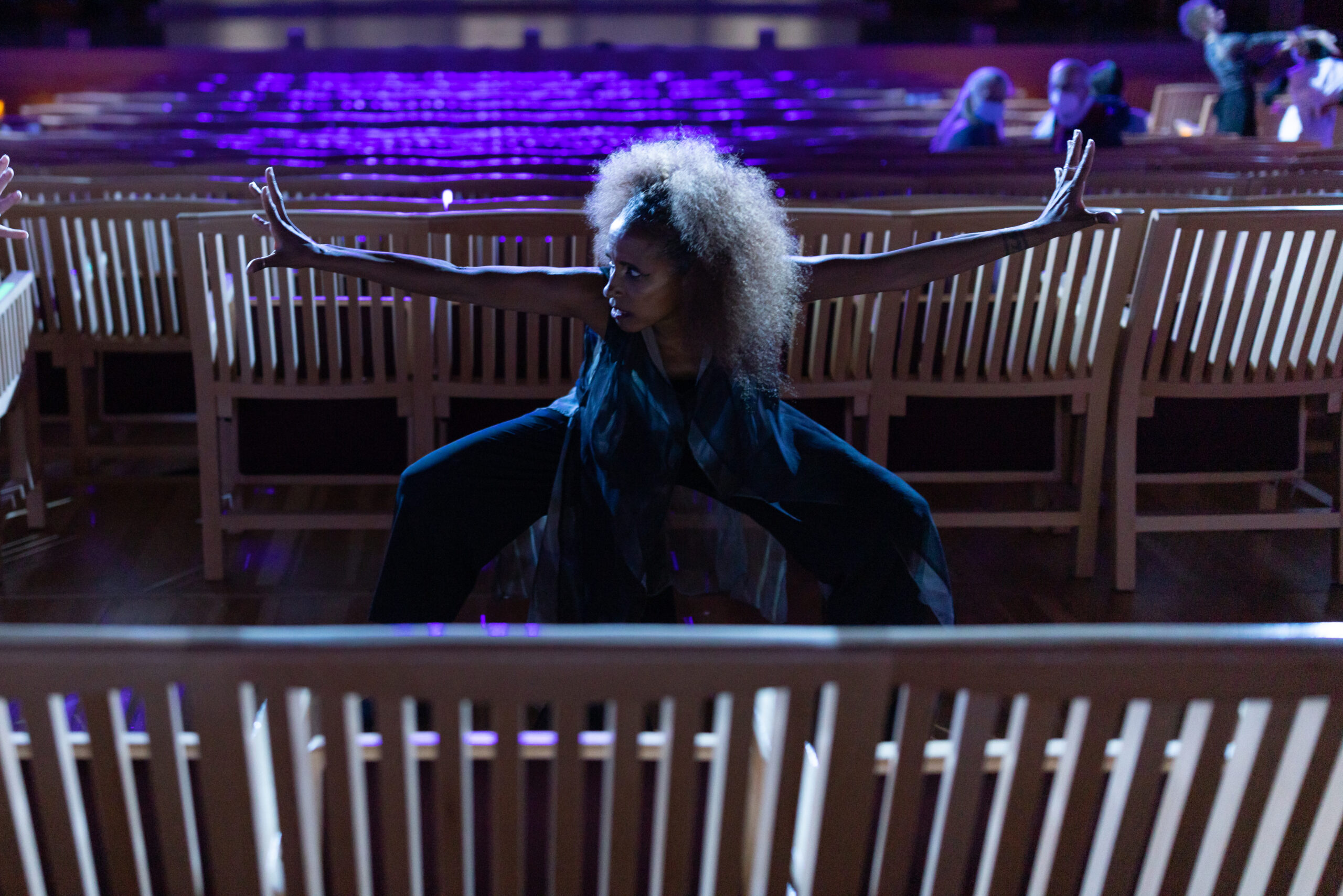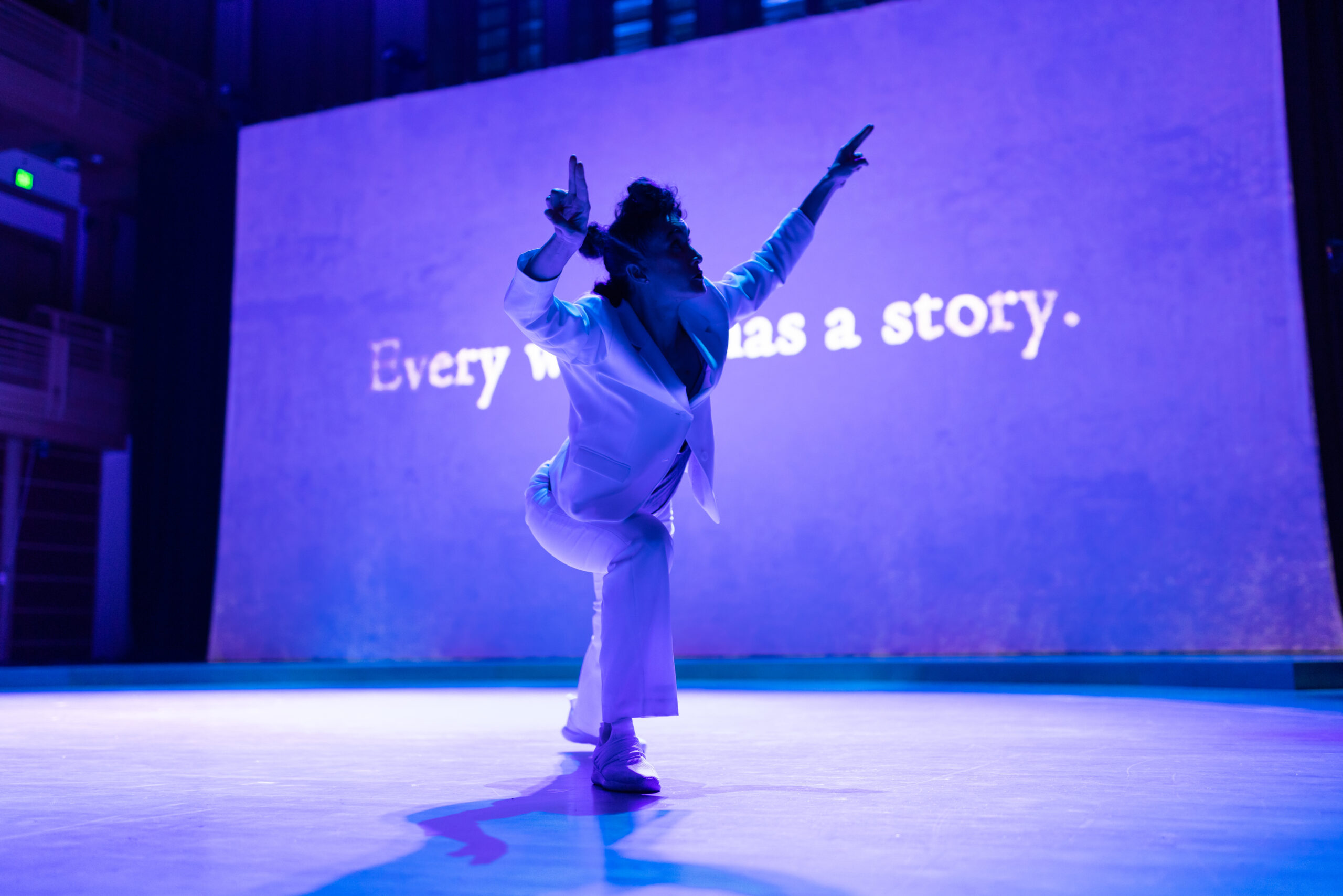Wicked Bodies
“Wicked Bodies… a history of sly, grotesque, sensual, wildly creative women that every culture carries in clichés, stereotypes, and fictions because they are actually very real and very present.”
– Liz Lerman
Inspired by powerful and grotesque images of women’s bodies over multiple historic periods, Liz Lerman’s new work Wicked Bodies premiered Thursday April 14, 2022, at the Green Music Center. It toured to Jacob’s Pillow Dance Festival August 10-13, Arizona State University’s ASU Gammage on September 24, and Yerba Buena Center for the Arts October 28-30.
Wicked Bodies, an intimate spectacle, brings together several consistent themes of my choreographic output:
– the invisible ways and means of feminine thinking and action which have been celebrated, erased, or criminalized;
– legal systems that attempt but often fail to bend our actions towards a fairer and more just world; and
– how we as a group of intergenerational artists bring our personal lives to the stage within characters that are imagining futures
Inspiration
Back in 2013 I wandered into an art exhibition at the Scottish National Gallery entitled Witches and Wicked Bodies. The museum show made me crazy. I cried. I swore. I gaped.
The exhibition covered 500 years of prints and drawings of witches by some of the greatest illustrators from the West, as well as unknown churchmen and a few women artists. The pictures ranged from the explicitly sexual to the wildly mysterious, but the depiction of women’s bodies as lethal, poisonous, powerful, and strange was persistent, regardless of historical period.
– Liz Lerman
In our world, this is another way of saying: we are crossing boundaries all the time. Everybody has ideas about everything.
I am beyond grateful to the performers and designers who put themselves in this cauldron with me. They offer ideas and watch their thought or movement taken up by another. They risk giving solutions knowing that most of the ways we fix take so many iterations that their original notion might be erased in transit from one section to another, from one kind of meaning to another. They persist through scheduling changes, pandemic protocols, unusual living spaces when we are able to finally be together.
Research

Research
Through it all, the women show more power than victimhood, more joy than diminishment.
Within them, Liz sees a sly humor worth exploring alongside the gruesome deaths and torture that were the outcomes of many of these narratives.
Process
The research-and-development phase of Wicked Bodies was extended even by my standards, but each residency period allowed me to focus on a particular aspect of the piece.
For example, a June 2019 residency included my long-time friend and collaborator Martha Minow, a former dean of the Harvard Law School. She helped us with the Witch of Forgiveness, and also lead us to explore deep-seated responses such as rage – which sometimes precedes forgiveness and other times makes it possible.
I’ve worked with my design team to construct the world of the witches through sound, video, lights, costumes, and magic both old and new.
Some stories stay, others fall away, but the long process of holding things open often leads to new discoveries and more interesting material. And the reckonings of the past two years have had their influence.
Support has been varied and crucial: the development of Wicked Bodies was made possible by the New England Foundation for the Arts’ National Dance Project, with lead funding from the Doris Duke Charitable Foundation and The Andrew W. Mellon Foundation. Lead commissioning support came from Arizona State University and its department of ASU Gammage, and the Green Music Center at Sonoma State University as part of a Hewlett Foundation 50 Arts commission. Additional critical support was provided through residencies by Harvard University through the research fund of Martha Minow; Bethany Arts Community; Harvard ArtLab; The John F. Kennedy Center for the Performing Arts as part of the Social Impact’s Office Hours Residency program; PillowLab through Jacob’s Pillow Dance; Scripps College; the Moss Center at Virginia Tech University; and an NCCAkron Satellite Residency.

Project Collaborators
Keith A. Thompson, Rehearsal Director & Co-Choreographer
Darron L West, Sound Design
Sarita Fellows, Costume Design
Jeanette Oi-Suk Yew, Lighting Design
Olivia Sebesky, Projection Design
Meg Kelly, General Manager
Erin Donohue, Creative Producer
Performers: Will Bond, Leah Cox, Miko Doi-Smith, nia love, Paloma McGregor, Ruby Morales, Elisa Garcia-Radcliffe, Vincent E. Thomas, Keith Thompson
Support the Work
Our continued research and development for works like Wicked Bodies is made possible with the support of individual donors like you. Your generous gift is tax deductible and provides for our collaborators, rehearsal space, and the necessary luxury of time – time to process our ideas. Thank you for your donation.
